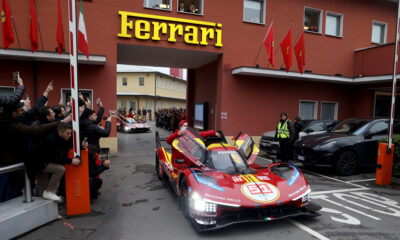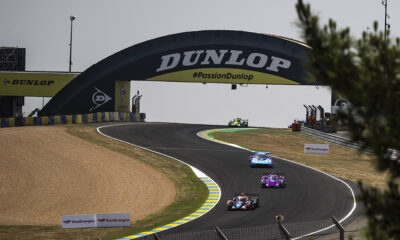A wave-by procedure will be introduced to safety car periods at the 24 Hours of Le Mans as part of a regulations shakeup for the 100th-anniversary edition of the race.
According to the event’s supplementary rulebook, the current system of using three safety car vehicles to control the pace of the field during incidents has been adjusted.
Three safety cars will continue to be used initially, but they will be merged into one safety car queue under which a wave-by — described as a ‘pass-around’ in the regulations — will be permitted.
A wave-by is already available to teams in the FIA World Endurance Championship rounds outside of Le Mans, which is the fourth race of the season this year.
The IMSA WeatherTech SportsCar Championship also has its own version, while Fanatec GT World Challenge Europe powered by AWS Endurance Cup is set to adopt a similar measure this year.
At Le Mans, any car that is behind the sole safety car but in front of its class leader in the queue will be allowed to pass around the safety car and complete a lap of the 8.5-mile Circuit de la Sarthe before rejoining at the back of the queue.
After the wave-by has been completed, the race director will initiate a ‘drop back’ procedure whereby the queue is tidied up into class order.
The LMP2 cars will first be ordered to the right-hand side of the track to be passed by Hypercars and GTEs. GTE cars will then step to the right and be passed by the Hypercars and LMP2s, creating a Hypercar-LMP2-GTE order for the resumption of racing.
As is the case in the WEC, teams are responsible for deciding if their car is eligible for the wave-by. Cars that take the wave-by when they are ineligible will receive a stop-go penalty equal to two race laps.
Cars will still be allowed to pit during Le Mans safety car periods, before the three safety cars have merged into a single queue. Pitting cars will be held at a red light at the end of the pit lane until after a safety car queue has gone past.
The pit lane entrance will be closed when the field is merged behind one safety car.
Merging the field into one queue is set to prevent class battles from being split up, which has been an area of contention in recent Le Mans editions.
Under the old three-car system, a competitor could gain a significant advantage if they were picked up by one safety car and their rivals were picked up by the safety car behind.
The regulations state that the safety car merging, wave-by and drop back procedures will not be implemented in the final hour of the race.
In addition to safety car periods, the race director can implement Full Course Yellows, isolated slow zones and red flags to manage incidents.

























